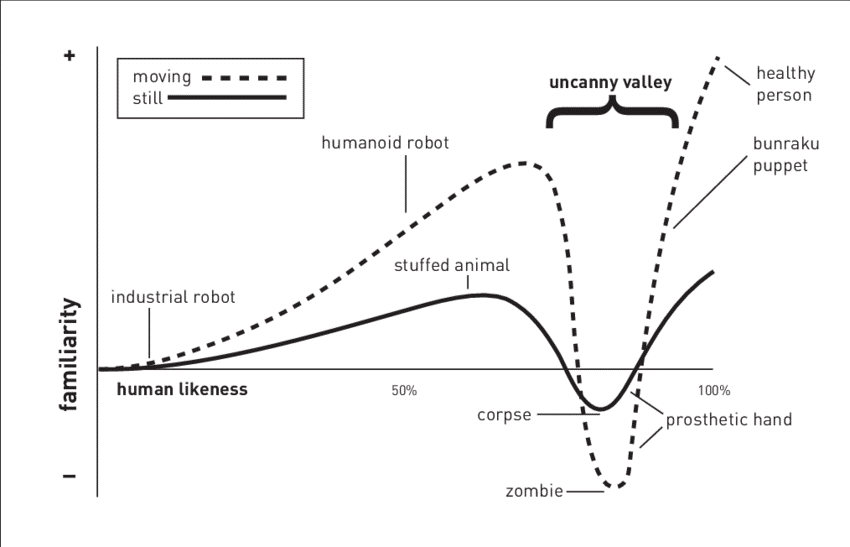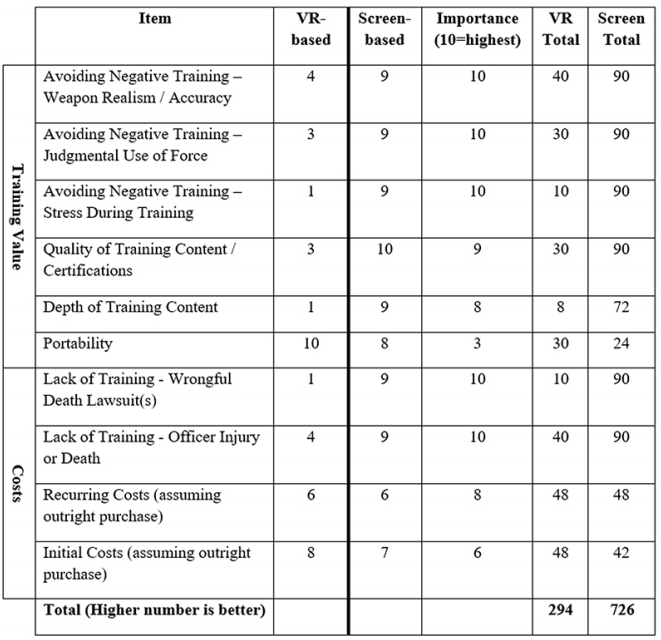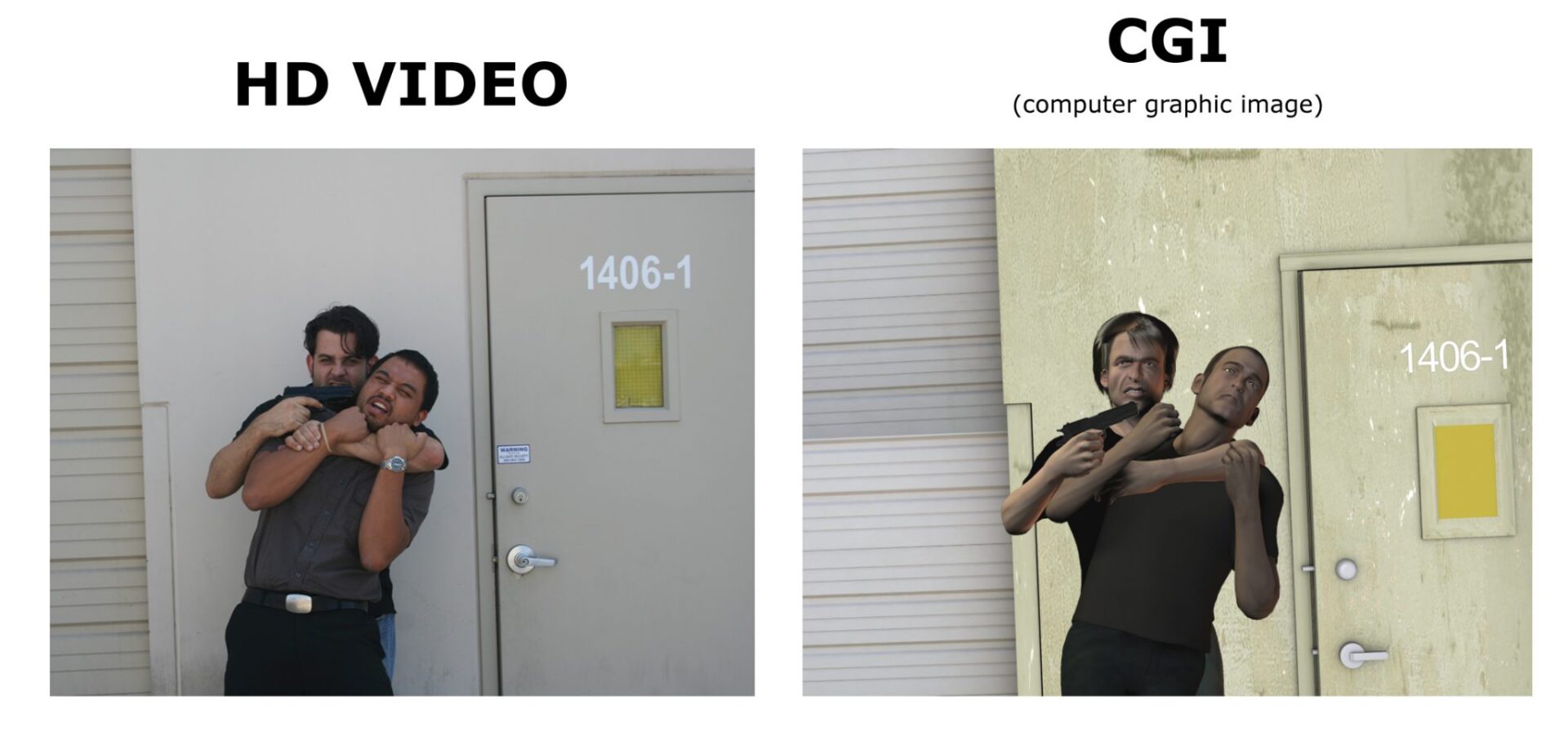
VirTra’s mission is to provide law enforcement and military with the most effective, realistic training possible for maximum skill transfer and increased safety. This is done by providing powerful firearms simulators, a majority of which have multiple screens to increase the immersion and teach trainees to put their head on a swivel.
Unfortunately, the recent hype surrounding virtual reality goggles has infatuated important decision-makers, who have become distracted with the new technology and disregard the disservice its teaching provides law enforcement.
Instead of falling victim to this exciting-but-lacking technology, VirTra is sticking with high-fidelity, scientifically-proven training simulators. Recently, VirTra’s CEO Bob Ferris and the Director of Training & Curriculum Lon Bartel wrote a whitepaper discussing how screen-based training beats VR-based training in nearly every category:
VirTra prioritizes training quality—from each scenario’s realistic branching options to marksmanship backed by independent third parties who verify ballistic calculation. Even the smallest nuances can break the training immersion, potentially causing training scars. Russ Read, a Washington Examiner reported, tried VR training and quickly noted its faults. “The red dot sight didn’t operate like the real thing—you had to line up the red dot with the front sight to shoot accurately. Additionally, reloading the magazine was an awkward, clunky experience.”
When shopping for technology, consumers are well aware of the variations that exist between companies. Considerations for clarity, size and features are given and analyzed, often weighed between the store brand and name brand. So why would agencies not provide the same research and consideration for their training departments?
Instead of a cheaper ‘store brand’ training solution—such as VR’s fake weapons and non-convincing reality—VirTra’s higher quality of training provides officers and warfighters the opportunity to use their personal firearms equipped with recoil kits inside a state-of-the-art environment. These simulators feature scenarios filmed in 4K and are compatible with a variety of accessories, allowing skills learned in training to transfer to the real world.
Refrain from following fleeting trends. Do your research and ensure the training budget is spent on the most effective use-of-force training system possible.
VR, the once ‘futuristic’ technology, is “hot” and starting to show up more and more. Over the span of a couple of decades, it has trickled into medical and law enforcement industries, promising new and better ways of training for doctors, officers, military personnel and other specialty industries.
On the surface, VR headsets sound almost too good to be true, the cure-all for the training needs of police. However, if you spend even 5 minutes actually going through the current VR training programs you will notice problems come to light.
Tools of the Trade
For the full training effect, the trainee must be able to deploy the tools of their trade, such as firearm, Axon® TASER®, OC and flashlights. Moreover, these tools must be able to replicate the real-world but most VR today can only be ‘close’ to the real-world. Why is ‘close’ not good enough? Can you imagine training for a hostage situation where the pistol was a different weight and shape and the tracking was off just enough to where you don’t know if your shot would hit the hostage or the hostage taker? You’d leave the training potentially worse-off and more confused than before the training began. This is called negative training and, like the ‘do no harm’ code in medicine, it is also a mantra that instructors live by.
VR Sickness
One of the most common complaints of VR training is the motion sickness—commonly known as “VR Sickness” or “Cybersickness.” As a result, individuals experience disorientation, nausea and/or eye fatigue¹. One study discovered more than 80% of participants experienced nausea and that out of those individuals, 9.2% vomited as a result².
Why this happens is quite simple: the brain receives visual information from the eyes that does not match physical information brought by the rest of the body. Or in other words, you see movement via VR but naturally do not feel the same exact movement in your inner ear¹.
De-escalate Polygons?
In addition to the problem of correct tracking and movement—or really, the lack thereof—is the problem of CGI (computer generated images – like a video game character). Headsets typically utilize CGI environments and subjects, making it easier for the officer to ‘look’ around the environment and see from every angle.
But think about what it takes to make CGI look human. It’s a careful combination of natural body movement, eye movement, subtle facial and body cues, and more. To create a realistic human takes an entire team of graphic artists and animation specialists, who still struggle to make ‘CGI humans’ look human.
This is because of the “Uncanny Valley”; when a simulated human becomes 99% lifelike, humans naturally focus on the missing 1%³. Whether it is the slack skin, off-kilter movements or lack of sparkle in their eyes, we become off-put and distracted by the subject. Instead of seeing 99% of a human they see 100% of a non-human, video game avatar. As such, it is unrealistic to expect officers to train with CGI subjects when the officers themselves are disconnected by the fake characters.
Officer training is not a game and should not be treated as such. Although VR has continued to improve its technologies and visuals, there are side effects and immersion-breaking problems that cannot be ignored. Instead, departments must supply the most realistic, beneficial and skill-building training to their officers. Find out how by contacting a VirTra representative or watching our training here.
Sources:
- Eunhee Chang, Hyun Taek Kim & Byounghyun Yoo (2020) Virtual Reality Sickness: A Review of Causes and Measurements, International Journal of Human–Computer Interaction, 36:17, 1658-1682, DOI: 10.1080/10447318.2020.1778351
- Stanney KM, Hale KS, Nahmens I, Kennedy RS. What to Expect from Immersive Virtual Environment Exposure: Influences of Gender, Body Mass Index, and Past Experience. Human Factors. 2003;45(3):504-520. DOI:10.1518/hfes.45.3.504.27254
- Thompson, Clive. (2004). The Undead Zone Why Realistic Graphics Make Humans Look Creepy.
With today’s technology, many different things can be created to appear on-screen. Visuals ranging from brightly-colored cartoons, computer-generated imagery (CGI) and high-definition video are considered normal. Simply flipping through TV channels will reveal this among a larger collection of imagery types.
For police and military training simulators, it is important for visuals to convey realism, in order to fully immerse and teach the trainee. No instructor would willingly use character-style burglars running across their 300-degree simulator and call that teaching. The same principle applies to CGI, which, despite much improvement over the years, still falls short of realistic visuals.
“CGI is so prevalent today (in simulations),” says Bob Ferris, CEO and Chairman of VirTra. “A valid concern is that developers might not ‘think outside of the box’ of CGI for potentially superior alternatives especially suited for specific types of training.
Immersion in Training Scenarios
To ensure motions and expressions of individuals in VirTra’s scenarios are similar to what may be encountered in the field, VirTra hires vetted actors and actresses to perform the roles. Utilizing real actors also allows realistic sounds to be heard from the environment in addition to the individuals themselves—such as changes in vocal tone and pitch, screams, subtle sounds and more.
Due to lack of realistic visuals and sound, the biggest problem with CGI is how it fails to immerse trainees in the scenario. These students will not experience the same levels of empathy with something that is not real—regardless of the CGI’s quality. But with a real person, trainees care and learn more.
The Uncanny Valley

In these cases, it does not matter how realistic the visual is—people know it is not real. The effect is unsettling and many can’t put their finger on what it is exactly; maybe the character is missing the human ‘spark’ in its eyes.
However, when androids barely look human, people are not concerned or affected by the Uncanny Valley. In some cases, the android comes across as cute (think: Star Wars’ R2-D2).
Rarely do people find ‘realistic’ CGI fascinating. Most often, people find the replicas creepy or unnerving. This same effect applies to trainees placed in training scenarios utilizing CGI humans. Rather than feeling empathy towards the subjects, or immersing themselves in the scenario, trainees are put off and unable to transfer those skills to a situation with real people.
Using Real Actors in Training Simulators
All of VirTra’s scenarios are filmed with professional cameras and vetted actors/actresses, including those in V-Author® where users can build their own scenarios. This ability increases the training value by providing the most lifelike experience possible within VirTra’s use of force training simulators. VirTra strongly believes video-based training can provide higher fidelity in police or military training, allowing for improved real-world skills (Ferris, 2013). For more information, contact a VirTra specialist.
References
Ferris, B. (2013). New video-based approach for dismounted simulation.
Hsu, J. (2012, April 3). Why “uncanny valley” human look-alikes put us on edge. Retrieved from Scientific American: https://www.scientificamerican.com/article/why-uncanny-valley-human-look-alikes-put-us-on-edge/
Thompson, C. (2004, June 9). The undead zone: Why realistic graphics make humans look creepy. Retrieved from Slate: https://slate.com/technology/2004/06/why-do-game-characters-look-so-creepy.html
Police contacts involve real people in a myriad of situations. Police officers respond in their communities to everything from traffic stops to suspicious behavior to shootings and hostage situations.
The subjects involved in each incident unconsciously give a wide range of physical clues to responding police officers which helps them evaluate how to react to the unfolding scenes, including facial expressions, body movements, hand twitches and other inputs. That kind of situational awareness is critical, especially in life or death scenarios.
Choosing a Use of Force Training Simulator System
That’s why when police departments choose a use of force training simulator system, they should carefully research whether the system they buy includes high-quality real video taken with human actors, vs computer-generated imagery (CGI) with character approximations that turn such training into an unrealistic cartoon.
With talented human actors, the video simulations in quality use of force simulators such as VirTra’s V-300 five-screen system allow officers to see actual human emotions in their training, which provides true-to-life feedback about how an emergency incident is unfolding. That means the officers undergoing the training can accurately learn the real-life visual clues they are truly going to see in a subject’s eyes, face, hands, body movements and more, says Ken Emerson, a former 20-year veteran of the Arizona Department of Public Safety and a law enforcement subject matter expert at VirTra. These valuable “contextual cues” and ‘fact patterns” are critical for officers to evaluate subject’s behaviors and intent.
“With CGI, you’re getting mechanical types of movements,” says Emerson.
“You’re not getting the facial expressions, you’re not getting the voice pitch and tone changes you can get with live actors, the real-life screaming, the hollering. The mechanical movements of generated images also do not accurately match how humans really move. Most officers like the real video versus the CGI effects.”
To create such realism with computer-generated animations, software designers would have to figure out how to accurately re-create all of those specific movements, which is impractical from a production standpoint, Emerson says. “It would take forever to get all of that done in an animation.”
And just as important, says Emerson, with computer-generated training images, officers can’t generate needed compassion for the subjects and innocent victims they are involved with in the police use of force training scenarios.
“If you see it in CGI, you really don’t have empathy for that suspect and others,” he says. “You try to shoot the threat and instead you hit the hostage and it just looks like a cartoon. It doesn’t have that same psychological impact.”
Video vs Graphics Police Use of Force Training
That’s where real life video captured with real actors makes a huge difference, adds Emerson. “If you’re looking at a real person and you can see how scared they are, with a good actor you care about the outcome because you are not dealing with a cartoon character.”
The difference in approaches can be compared to using an animated driving simulator, he says. “If you look at computer-generated imagery in a driving simulator, it’s cartoonish-looking and you don’t get that feeling of realism. “If you put police officers in a simulator that’s not realistic, they don’t get real value out of it.” Simulated training shouldn’t look like a game nor should it be taken as a game.
100% Human Force on Force Training
VirTra’s police judgmental use of force training scenarios provide 100 percent human acted scenarios. They include hundreds of possible scenarios and alternate situational results based on how an officer responds to each situation. This enables force on force training sessions to be realistic, based officers’ reactions to each situation.
In addition, with real video, police departments can request custom video content that replicates situations their officers have faced so they can better train for similar situations in the future. That can be harder to do with CGI-based systems, says Emerson.
Emerson, who for many years served as a highway patrol officer in rural Arizona, says that “this training really comes into play when you are out there by yourself. Realism is better than CGI.”






